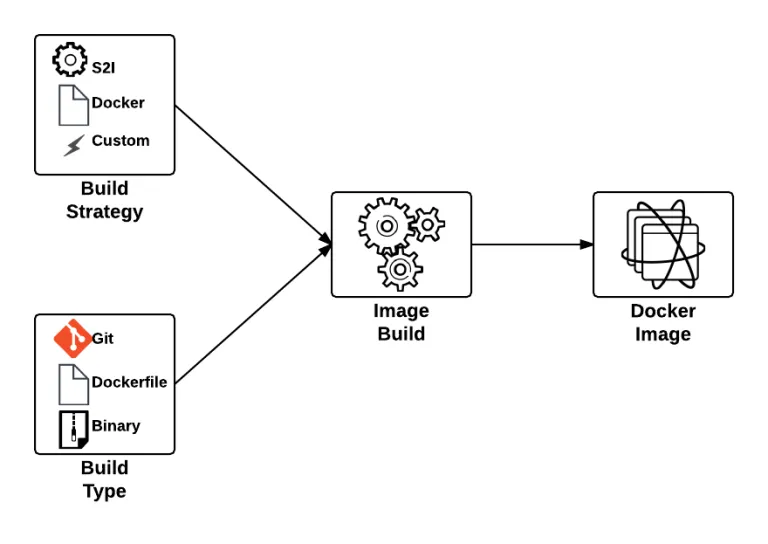Dive deep on the binary build type in OpenShift to rapidly deploy applications to the cloud.
Article written on Block 87 by Andrew Block
One of the benefits of a Platform as a Service is the ability for developers to rapidly deploy applications to an elastic, cloud based environment. The application workflow typically involves a developer providing the location of source code in a Git repository that is remotely accessible by the platform for it to retrieve, and to facilitate the build and deployment process. In OpenShift, the two most common build types, Docker and Source to Image (S2I), follow this paradigm. The developer will provide the location of a Git repository, and OpenShift will retrieve the source and perform the build depending on the type. While this workflow is extremely effective, it does require the developer to complete several intermediately steps beforehand, such as allocating and pushing to a Git repository for the platform to pull from. An alternative solution is to utilize another source type supported in OpenShift, called binary builds. Instead of OpenShift using a remote Git repository to pull a source from, the developer directly pushes their content to OpenShift.
This type of build workflow has several benefits developers can take advantage of. First, they can quickly deploy their application to the platform without requiring the allocation of other resources or dependencies, such as a Git repository. Secondly, if the developer has an existing binary artifact, such as precompiled Java web archives (.war), they can deploy it directly to the platform instead of storing it in a Git repository, which is not recommended.
First, let’s understand the entire process behind a binary build in OpenShift. As mentioned previously, the build process is driven by the developer in a push manner, and in most cases, facilitated by the OpenShift Command Line Interface (CLI), which will upload the binary content and start the build process. The start-build subcommand of the OpenShift CLI is used to initiate the entire process. When using a binary build, several types of content can be provided, each with their own subcommand flag: directories, compressed files, or a git repository:
| Content Type | Subcommand Flag |
|---|---|
| A system file folder | –from-dir |
| A compressed file | –from-file |
| A git repository | –from-repo |
The builds section of the OpenShift documentation provides a summary of the subcommand options including a list of flags that can be added to further customize their behavior.
With a high level understanding of the binary build process, let’s discuss the steps necessary to configure a binary build. As with all builds in OpenShift, these are set in the BuildConfig object. A typical configuration for a PHP application looks similar to the following:
{ "kind": "BuildConfig", "apiVersion": "v1", "metadata": { "name": "${APPLICATION_NAME}", "annotations": { "description": "Defines how to build the application" } }, "spec": { "source": { "type": "Binary", "binary": { "asFile": "" }, "contextDir": "${CONTEXT_DIR}" }, "strategy": { "type": "Source", "sourceStrategy": { "from": { "kind": "ImageStreamTag", "namespace": "openshift", "name": "php:5.6" } } }, "output": { "to": { "kind": "ImageStreamTag", "name": "${APPLICATION_NAME}:latest" } }, "triggers": [ { "type": "ImageChange" }, { "type": "ConfigChange" }, { "type": "GitHub", "github": { "secret": "${GITHUB_WEBHOOK_SECRET}" } } ] }}, |
The most important section in the BuildConfig is the source type in the spec section. In this example, Git is specified as the source type and when a build is run, the contents of the git repository will be cloned into the builder prior to performing the build. To switch over to a binary build type, the source section would look be modified to the following:
"source": { "type": "Binary", "binary": { "asFile": "" }}, |
The type value is replaced with Binary to indicate the binary build type, and the details of the binary build is entered in a binary section replacing the git section details. The asFile value is used to provide the name of a file containing the binary content that should be created inside the OpenShift builder. Since this field is empty in this example, the contents of the binary source will be extracted into the builder.
-----
Connect with Red Hat Consulting, Training, Certification
Learn more about Red Hat Consulting
Learn more about Red Hat Training
Learn more about Red Hat Certification
Subscribe to the Training Newsletter
Follow Red Hat Training on Twitter
Like Red Hat Training on Facebook
Watch Red Hat Training videos on YouTube
Follow Red Hat Certified Professionals on LinkedIn

This work is licensed under a Creative Commons Attribution-NonCommercial-NoDerivs 3.0 Unported License

